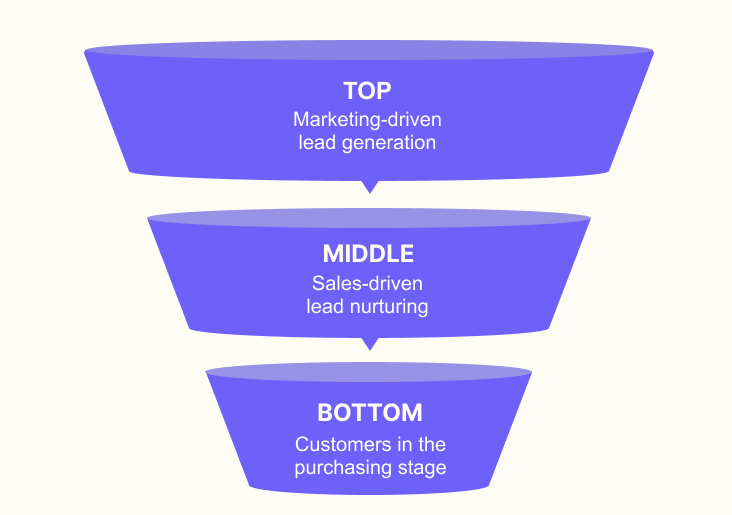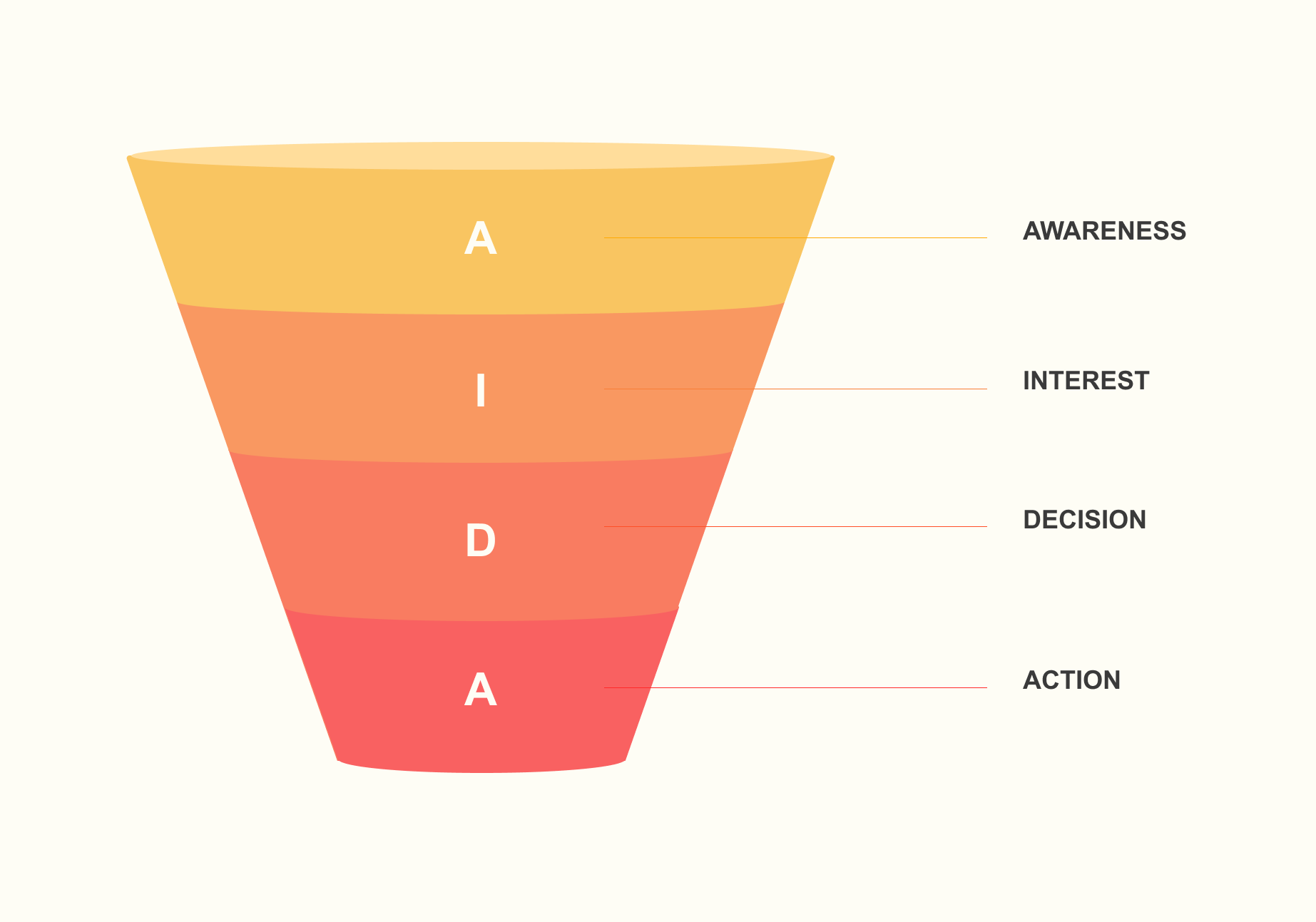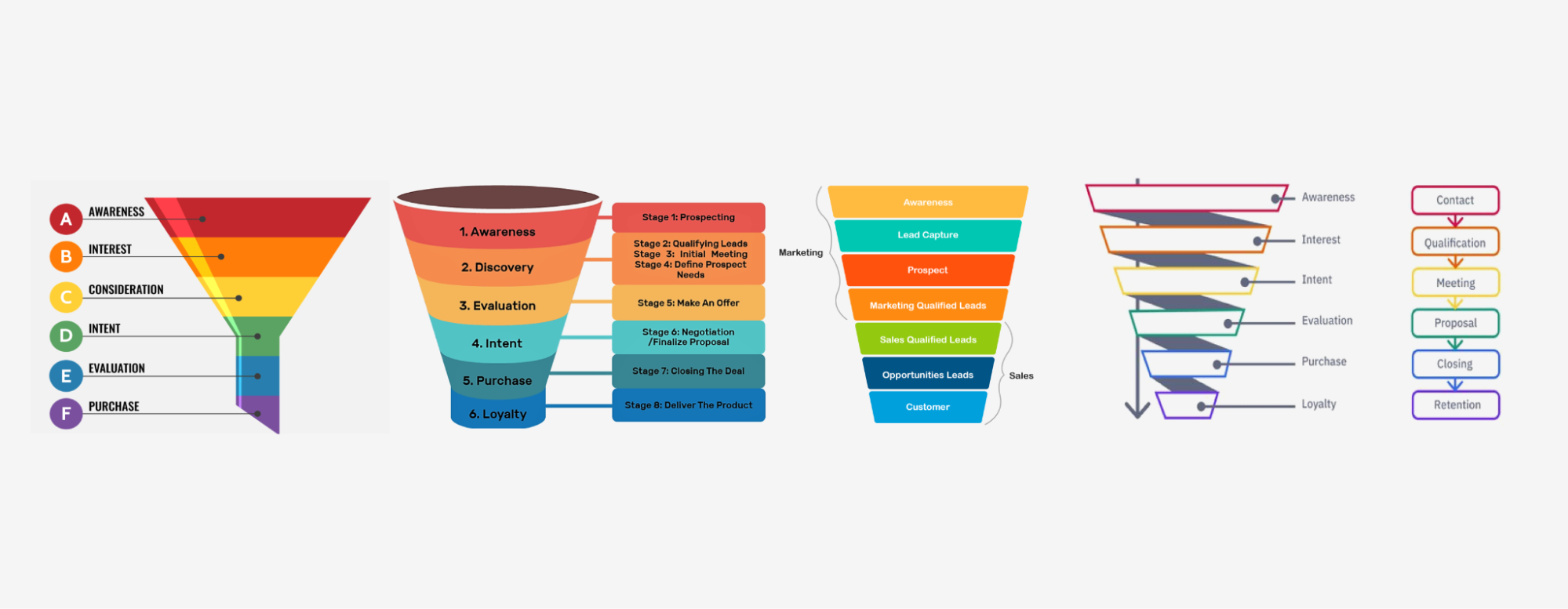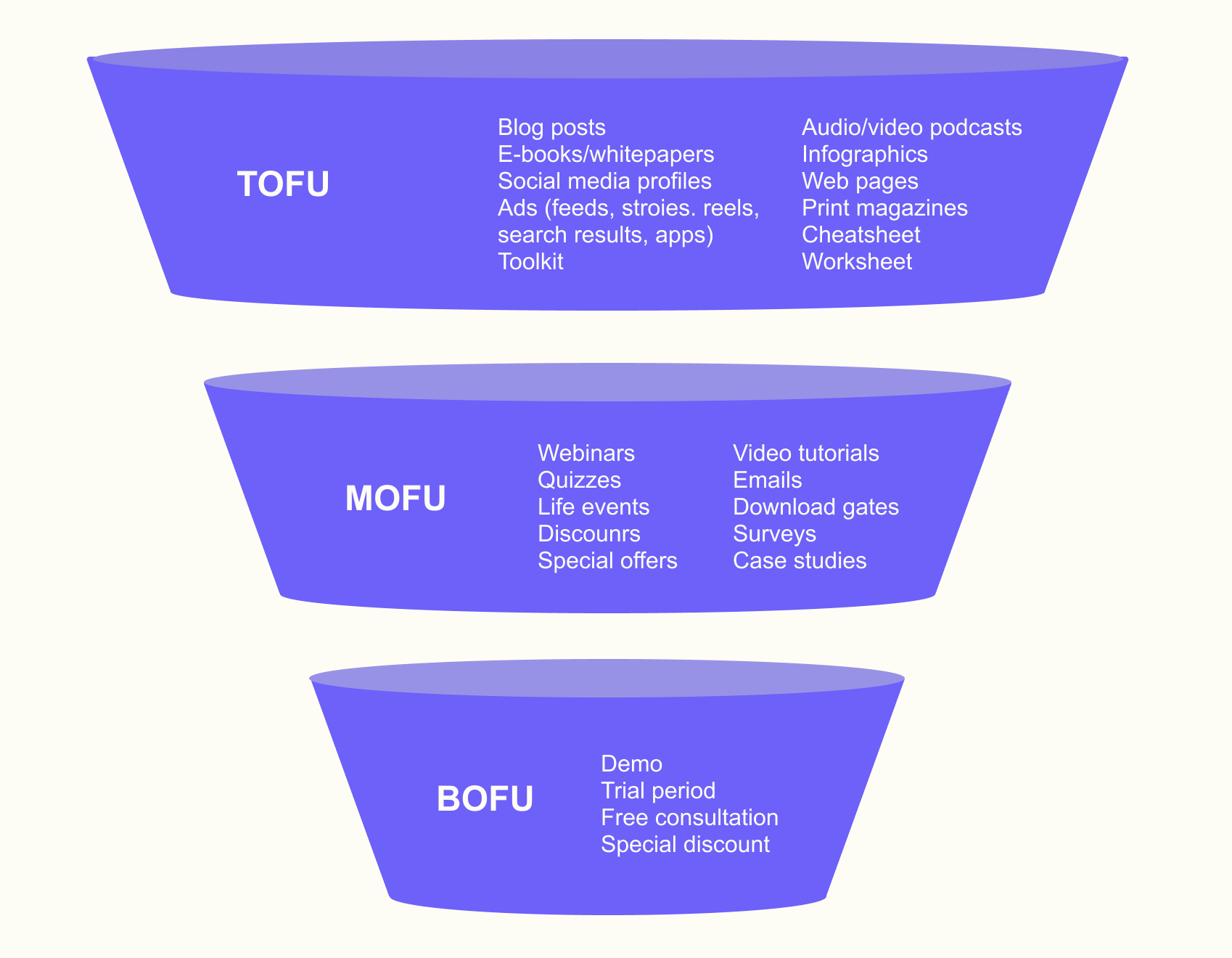What Is a Sales Funnel and How Does It Work?
2022-10-18

Whether you have a physical store or an online business, you should design a sales funnel to engage and then transform users into buyers. In case you have any doubts about whether you need a sales funnel or not, just ask yourself: do you want to get the maximum of your sales leads, improve your sales and digital marketing activities, and establish long-term customer relationships? If the answer is yes, let’s figure out what should be done to obtain it through the sales funnel.
What is a sales funnel?
A sales funnel is a graphic representation of a potential client's journey to becoming a customer. It assists in understanding and visualizing the sales process, as well as measuring overall conversion performance between each level of the funnel.
It’s important to notice that the sales funnel is not the same as the marketing funnel. The marketing funnel ends approximately in the middle of the sales funnel (MOFU). They are closely connected (as the sales funnel can function only with the help of specific marketing activities) and once the prospect is aware of your offerings, he exits the marketing funnel and enters the sales funnel.
Like actual funnels, a sales funnel has an inverted pyramid form. The size of each section of the funnel represents the size of the audience, with the top being the broadest and the bottom being the narrowest.
A sales funnel generally consists of three main parts:
1. The marketing that attracts potential customers to your products or services is the top of the funnel.
Example: the ads users see between organic Instagram stories, the landing page of your website.
2. The middle of the funnel applies to all aspects of your sales process preceding the sale.
Example: website visitors examining product cards.
3. The bottom of the sales funnel is the purchase itself.
Example: customers making a purchase on a website by inputting their credit card information.

It is essential to mention that each stage of the funnel pushes prospects right into the next one, getting rid of those who are not interested in your offer. As a buyer moves through the sales funnel, more information is exchanged and it becomes clear that purchasing the product would benefit the client and that there is a greater chance the deal will finally succeed. The goal of an effective sales and marketing process is to increase conversion rates at each level of the funnel so that more consumers complete the whole process.
Why is the sales funnel important?
The sales funnel is a good model for understanding the customer path from the first contact to purchasing your product or service. It offers a valuable framework for analyzing your business and identifying opportunities for growth.
Specifically, a sales funnel can:
- Help you choose a marketing strategy. The sales funnel allows you to determine which marketing techniques and strategies you will need to prosper.
- Teach you how to interact with your consumers. The way we define our products, provide content, and communicate with our customers has a great impact on how far they progress down the sales funnel. With the sales funnel, you can adjust the tone of your writing, create well-directed content, or make appealing offers.
- Generate more sales. As you choose a strong marketing strategy and learn how to relate to your clients better, you will lead more prospects to the Action section, meaning they will subscribe to your service or buy your product.
- Assist you in growing your business. Analyzing your sales funnel can let you identify where it succeeds and where it fails. It will also assist you in identifying the gaps in the various stages of your sales funnel.
Additionally, understanding how the sales funnel runs can give you a competitive advantage over other businesses within your industry, which is a great benefit.
What are the stages of a traditional sales funnel?
Sales funnels differ greatly depending on the industry. For instance, a B2B sales funnel for an enterprise software company may take many months or more, but a B2C eCommerce website sales funnel may just last a few minutes. Some funnels include several stages, while others have only two or three.
Nevertheless, there are several sales funnels that are considered traditional. Take the AIDA model as an example.

The funnel, according to it, should explain four cognitive processes that a client goes through while purchasing a product or service:
Awareness
The awareness stage is the first stage of the sales funnel. This is the first time someone hears about your item or brand. They may become aware of your company via seeing your ads, learning about it on social networks, or hearing comments from friends or relatives. Alternatively, a prospect may have discovered your firm through a Google search that led to your company's website.
Key action: attract.
Interest
This is the second stage of an AIDA sales funnel. The prospect has learned about your brand and offerings at this stage, and they have decided to analyze it depending upon the degree of interest.
Key action: engage.
Decision
Now that the buyer is ready to buy, he or she may be considering several alternatives from your competitors before making a decision. This is when they will compare costs, packages, and other aspects to choose which option is best for them. You can read more in our article on how to make prospects choose you over your competitors.
Key action: convince.
Action
The final stage of the AIDA model is action. Once you encourage a potential client to make a purchase, you transform him into a customer, making him a part of your company’s ecosystem.
Key action: sell.
AIDA model is one among multiple sales funnel models. One thing they all have in common: on an entry-level, you meet users not aware of your products and through each stage of a funnel you transform those users into prospects, and then into real customers.

Different variations of sales funnels
It wouldn’t be quite right to say that it’s better to find a ready-made model and implement it. On the contrary, each business would benefit from building a sales funnel aligned with company goals and aims.
The steps of the sales funnel can also be divided into smaller funnels, zooming in closer to each level of the funnel and reviewing each individual action that the client can make in order to move to the next level. From that point of view, it would be good to take AIDA as a template for your sales funnel and widen it.
How to create a sales funnel
Let’s take a closer look at how to create a converting sales funnel for an eCommerce business:
1. Examine your audience.
First, you'll need to get an idea of who your target customer is. Consider your consumers' purchasing process and the key decision points from their perspective. You even can make up a list of data points like time spent on a page, time spent scrolling, link clicks, and so on. The key is to understand who your clients are and what frustrates them.
2. Define your customer’s journey and represent it as a funnel.
Think of your current customer journey and map it out. Then, identify your starting point and your end goal (more likely, it would be a sale). Think of what improvements you may bring to the current state of your funnel. Get a clear image of what your clients really want and what you can offer them at every stage of the buyer journey.
3. Establish objectives for each stage of your funnel.
Set goals for each level: top, medium, and bottom. You might want to increase traffic to a specific page on your site or increase engagement, for instance. Determine sales pipelines that highlight every step in the sales process that the client takes to move to the next level. Every stage of a sales funnel should have a specific objective that will make prospects closer to becoming a customer.
4. Create a content strategy for each stage of the funnel.
To keep prospects going from one step to the next, each section of the funnel needs to have its own marketing strategy. The top of the funnel (TOFU) is usually aimed to raise awareness. Marketing efforts at the middle of the funnel (MOFU) should help clients evaluate what you have to offer. The bottom of the funnel (BOFU) is typically responsible for conversions.

5. Create a unique offer to generate leads.
You can increase the efficacy of your funnel by developing the correct offer and aligning it with the proper audience. You'll have more quality leads entering the funnel and a greater conversion rate.
6. Implement strategies and track performance.
Although the sales funnel’s final step is a purchase, this shouldn’t be the last interaction with your consumer. Up-selling, next-selling, cross-selling, and loyalty programs can help you keep and grow your customer base.
Remember that the sales funnel should be constantly tracked and managed. Track email open and click-through rates, monitor traffic and conversion statistics. Some of the key metrics you can take a look at are:
- Leads
- Conversion rate
- Acquisition costs
- Customer lifetime value
- Total sales
- Cycle time
- Average deal size
Also, pay attention to some of the common mistakes one can make working on a sales funnel:
- Using too many steps in your funnel. If you have a problem, I guess you want to solve it as soon as possible. So does your prospect.
- Ignoring funnel analytics data. Look through the analytics to discover blind spots, lost chances, and opportunities for growth. Your funnel must be adjusted on a regular basis depending on the data you get.
- Not following up with leads. Those who have experience interacting with you are the ones who might be ready to buy more expensive items and long-term subscriptions. Don’t lose this gold mine.
And, of course, don’t forget to test your sales funnel from beginning to end on your own. This will assist you in breaking down barriers and allowing prospects to engage with you at every level.
Conclusion
Creating an effective sales funnel is crucial for increasing conversions and revenue both in the short and long term. Don’t forget that a well-defined sales funnel influences how your prospects see you. Use our recommendations to create a sales funnel in order to optimize your sales process, increase conversion rates and generate more revenue.

